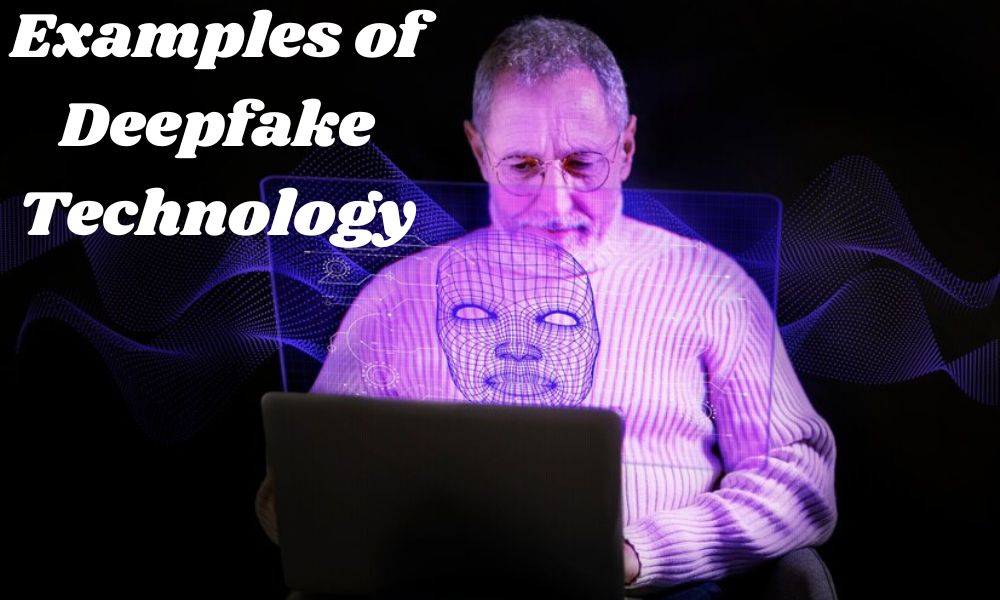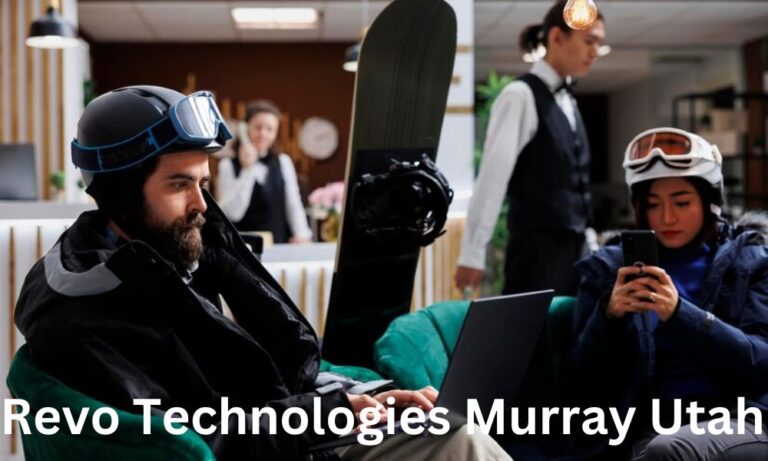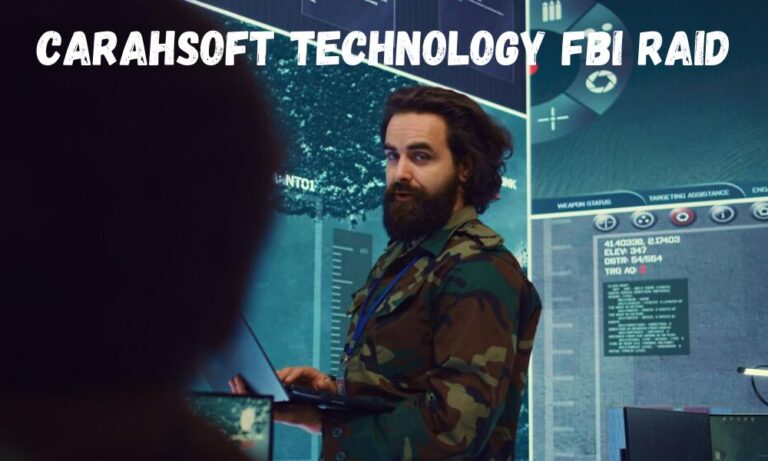
Examples of Deepfake Technology
Introduction to Examples of Deepfake Technology
We’re living in a world where reality and fiction can blur with just a few clicks. Deepfake technology, once the realm of sci-fi films, is now reshaping how we consume media and communicate with one another. From viral video parodies to serious political implications, examples of deepfake technology are popping up everywhere, sparking curiosity and concern alike.
As this innovative tech continues to evolve at a rapid pace, it’s essential to understand what deepfakes are, how they’re created, and their far-reaching impacts on society. Buckle up as we dive into the fascinating and sometimes frightening world of deepfake technology!
What is Deepfake Technology?
Examples of Deepfake Technology refers to artificial intelligence-driven methods used to create hyper-realistic fake content. It primarily focuses on manipulating videos and audio recordings, making it appear as though someone said or did something they didn’t.
At its core, deepfakes employ machine learning techniques such as generative adversarial networks (GANs). These algorithms analyze vast amounts of data from existing media to produce convincing replicas.
The result can be astonishingly realistic visuals that blur the lines between reality and fiction. This capability raises both fascinating possibilities and significant concerns in various fields, including entertainment, politics, and communication.
As this technology continues to evolve, understanding what constitutes a deepfake becomes crucial for navigating today’s media landscape. Its implications are far-reaching, challenging our perception of authenticity in an era dominated by digital content creation.
How Deepfakes Are Created
Creating deepfakes involves a blend of artificial intelligence and machine learning techniques. At the heart of this technology is a type of AI called Generative Adversarial Networks (GANs). In order for GANs to function, two neural networks are compared.
While the other network analyzes the images or videos, the first network creates them. This competition drives both networks to improve, resulting in highly realistic outputs over time.
The process often starts with gathering a substantial amount of visual data about the target person. Videos and images serve as the raw material for training the AI models.
Once trained, these models can manipulate facial expressions and even voice patterns to create convincing content that mimics real-life scenarios.
This sophisticated method not only raises questions about authenticity but also challenges our perceptions of reality itself.
The Impact of Deepfakes in Media and Communication
Examples of Deepfake Technology is revolutionizing how media and communication are experienced. It allows for incredibly realistic alterations in videos, making it easier to create content that can mislead or entertain.
News organizations face challenges as deepfakes blur the line between fact and fiction. Viewers may struggle to discern genuine reporting from manipulated footage, leading to distrust in traditional sources.
On social media platforms, deepfakes spread rapidly. Viral clips can generate significant engagement but often without context or accuracy. This phenomenon raises questions about accountability and source verification.
Moreover, creative industries leverage deepfake capabilities for innovative storytelling. Film studios use this tech to recreate performances or enhance visual effects, pushing the boundaries of creativity.
As an evolving tool, deepfakes simultaneously present opportunities for artistic expression and serious threats to information integrity within society’s discourse. The balance between innovation and responsibility remains tenuous as both creators and consumers navigate this complex landscape.
Ethical Concerns Surrounding Deepfake Technology

Deepfake technology raises significant ethical concerns that cannot be overlooked. The ability to create hyper-realistic videos can easily mislead viewers, making it challenging to discern truth from fabrication. This poses a threat not only to individuals but also to societal trust in media.
Another major issue is the potential for malicious use. Deepfakes have been employed in cyberbullying and revenge porn, exploiting victims without their consent. Such actions can lead to severe psychological distress and reputational damage.
Furthermore, as deepfakes become more sophisticated, the challenge of regulating this technology intensifies. Lawmakers struggle to keep pace with advancements, leaving gaps that bad actors could exploit.
There’s an ongoing debate about artistic expression versus deception. While some creators use deepfake methods for satire or parody, others cross moral lines that raise questions about accountability and responsibility in digital media.
Real-World Examples of Deepfakes
Examples of Deepfake Technology has made its mark in various unexpected ways. One notable example is the viral video of former President Barack Obama, created by Buzzfeed and actor Jordan Peele. The clip demonstrated how realistic deepfakes can be when paired with skilled voice imitation.
In entertainment, filmmakers are experimenting with deepfake to resurrect late actors for new roles. This technology was notably used in a Star Wars film to bring back Carrie Fisher’s character, showing both innovation and ethical dilemmas.
Social media also showcases lighter uses of deepfake tech. Memes featuring celebrities or politicians swapping faces often go viral, entertaining millions while raising questions about authenticity.
However, not all applications are harmless. Some instances have shown the dark side of this technology, including the creation of misleading political ads that spread false information during election cycles.
The Future of Deepfake Technology
Deepfake technology has an intriguing but uncertain future. As advancements in artificial intelligence continue, the capability for creating hyper-realistic content will only grow stronger. This evolution promises enhanced storytelling opportunities across various media.
However, with these advances come challenges. There’s a looming threat of misuse in misinformation campaigns or malicious impersonations that can disrupt trust within digital communications.
Regulatory frameworks must evolve alongside technology to ensure ethical use while fostering innovation. Developers are already working on detection tools to identify deepfakes, making it essential for platforms to balance creativity and responsibility.
As society adapts, education about the implications of deepfakes will be crucial. Understanding this technology could empower individuals to discern reality from fabrication more effectively in an increasingly complex media landscape.
What technology does deepfake use?
Deepfake technology primarily relies on artificial intelligence and machine learning. At its core, it utilizes neural networks to analyze and replicate human features.
A key component of this procedure is Generative Adversarial Networks (GANs). GANs consist of two competing networks: the generator creates fake images, while the discriminator evaluates them for authenticity. This tug-of-war leads to increasingly realistic results.
Another key element is large datasets of video and audio clips. The more data available, the better the AI can learn nuances in facial expressions, voice modulation, and even mannerisms.
Additionally, deep learning techniques enhance image resolution and quality. They help refine faces so that they blend seamlessly into original footage.
Together, these technologies enable creators to produce convincing deepfakes that blur the line between reality and fabrication effectively.
FAQ’s
What are deepfakes?
Artificial intelligence is used to produce deepfakes, which are phony audio or video recordings that appear realistic. They manipulate existing media to make it appear as though someone is saying or doing something they never did.
Are deepfake technologies illegal?
The legality of deepfake technology varies by region. While creating them may not be illegal, their use for malicious purposes like fraud or defamation can lead to serious legal repercussions.
Can you detect a deepfake?
Inconsistencies in audio and video data can now be analyzed using detection programs. However, the quality of detection varies, and many advanced deepfakes can still evade identification.
What industries are affected by deepfakes?
Various sectors like entertainment, journalism, and politics face challenges from deepfake technology. Misinformation can easily spread, leading to confusion among audiences regarding real versus altered content.
How can I protect myself from being targeted by a deepfake?
Staying aware of potential risks is key. Use trusted sources for news and verify information before sharing it online.
Conclusion
Deepfake technology is undeniably transforming the landscape of media and communication. As we navigate through examples of deepfake technology, it becomes clear that this innovation holds both promise and peril. On one hand, it offers creative opportunities in film, entertainment, and marketing. On the other hand, it raises significant ethical concerns regarding misinformation, consent, and authenticity.
As platforms for sharing content evolve alongside this technology, users will need to remain vigilant. Greater awareness can help society leverage the benefits while mitigating risks associated with deception and manipulation. The conversation surrounding deepfakes is just beginning; as advancements continue to unfold, staying informed will be crucial.
The future appears dynamic filled with potential yet fraught with challenges. How we choose to engage with examples of deepfake technology may very well shape our digital landscape for years to come.





